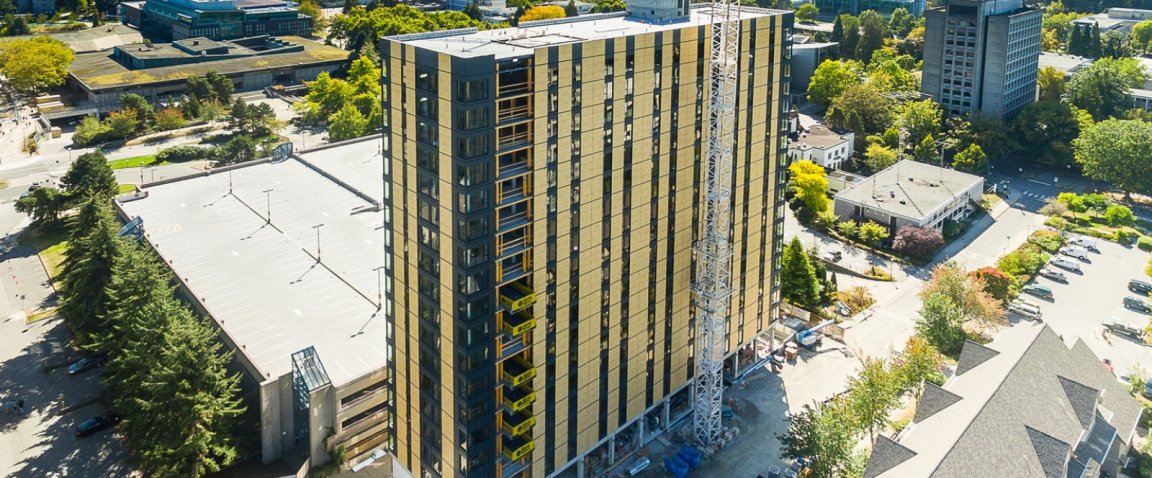
Back to Basics
For centuries, wood was the building material of choice for buildings around the world. During periods of industrial revolution, steel and concrete have taken its place. In more recent history, however, we’re seeing something of a resurgence of interest in wood as a competitive construction material.
In 2012, the Forte residential block in Melbourne, Australia set the record for the world’s tallest building made from timber at ten stories. Less than two years later, it was outdone by The Treet, a fourteen-story construction in Central Bergen, Norway. The Treet has since been outdone by Canada’s eighteen-story Brock Commons.

Cross-laminated timber is the material that allows these structures to be built without safety concerns. It’s made from sheets of two-by-fours that are layered together and bound by fire-resistant glue. The grain of each layer is rotated 90 degrees, and as such, the material’s structural strength is comparable to that of steel.
Ecological Edifice
If we can make building materials from wood that are as strong as steel, its other advantages make it a very appealing prospect. The first and not least of which are its major benefits in terms of the environment.
Estimates published by the U.S. Green Building Council state that as much as 39 percent of carbon emissions in the U.S. are the result of the construction of buildings and their usage. Wood is far lighter than steel, which makes it easier to transport to a construction site, and the foundations for buildings don’t have to be as deep. Both of these factors would serve to cut down on emissions.
Of course, there are challenges, too. While wood is a renewable resource, it’s critically important that we don’t use it irresponsibly, and continue reforestation efforts so we don’t exhaust our supplies. Still, wooden buildings offer up some promising opportunities for more ecologically sound construction, so long as the proper considerations are made.